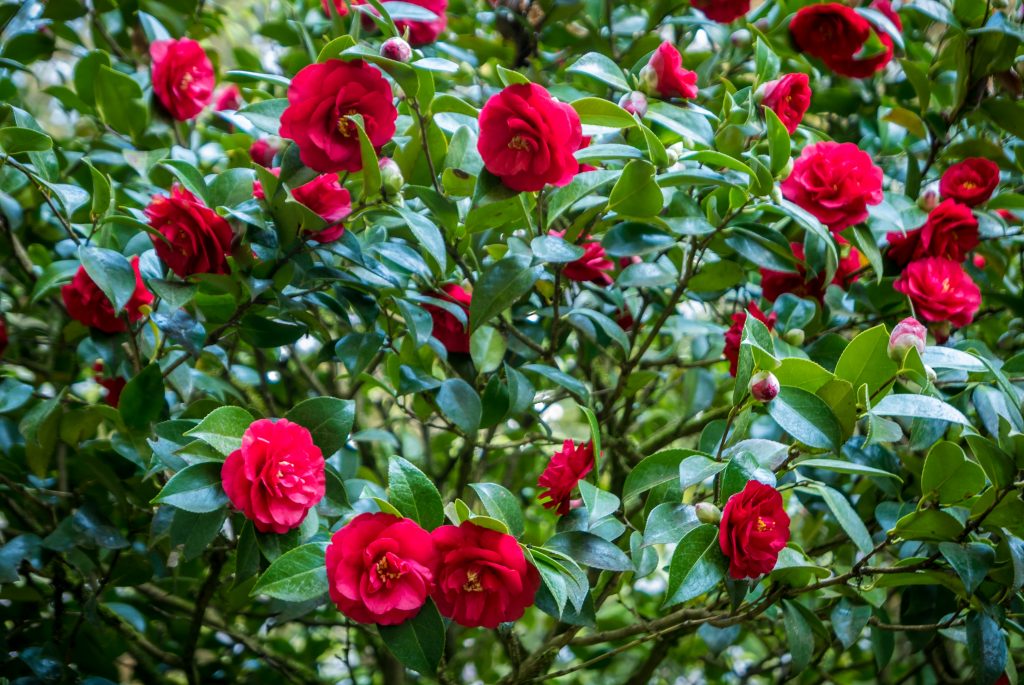Q. My Sasanqua Camellias are developing buds. But, I’ve noticed some strange looking buds. They’re green and pear shape instead of long an elliptical. Are they going to flower like the rest?

A. These bud-like structures will not bloom as that has already occurred last year. What you are seeing is the seed pod from the previous year’s flowers. Most of the flowers will fall off after blooming; however, some remain and form seed pods. Hybridizers and some adventurous gardeners will harvest the seed and propagate new plants. They’re looking for a seedling(s) that are different from the parents and have commercial value. To harvest the seed, you’d wait until the seed pods crack open, but before the seeds fall out. Sasanqua seed pods usually contain three to five seeds, although sometimes just one seed develops. The seeds are placed in a paper bag or container, and you sow them in the spring. Once they have germinated, I transplant them into individual 4-inch pots and then gallon cans in about a year. You’ll need to be patient as it takes five to seven years for the seedling to bloom. Hence, most gardeners don’t bother and pick them off and discard them.
Note: Sasanqua Camellias bloom mid-November through February, depending on the variety. They have single and semi-double flowers with a burst of bright, golden yellow stamens in the center. The blooms are not as large and showy as spring blooming Camellias japonica. They like a semi-shade location; however, they’ll grow in full sun. You’ll need to insulate the roots from the sun with a three-inch layer of mulch and watered frequently.
Q. We’re fortunate to have three fruiting Asian Pears. One of our trees had a few branches that were either dead or dying. The other two were okay. We cut off the dread branches in 2017 and 2018. This year, to our disappointment, all our Asian Pears showed signs of dying branches. How do we get our trees healthy again!
A. The die back in the Asian Pears is called Fireblight. It’s a bacterial disease that enters through the blossoms and travels downward. You need to prune out the deadwood but a foot below the point where the brown stops. Also, disinfect your pruning equipment with Lysol or rubbing alcohol after every cut to prevent spreading the disease. There is a spray available to control the Fireblight, but it’s impartial for a homeowner to use; hence, pruning after the fact is the solution.
Q. When is the best time to plant bulbs, and is it okay to plant bulbs in containers/planters instead of the ground? I’m new to all of this.
A. It’s perfectly okay to plant bulbs in containers of all sizes and shapes. While others may disagree, I believe that the planting season is from the end of October through the end of the year. This is when the ground has started to cool off, as days are getting shorter and the night’s cooler. It is suggested to purchase your bulbs early from mid-September through October for the best selection. It would be best if you also kept in mind that tulips and hyacinths need to be chilled for six weeks before planting, while daffodils don’t. A refrigerator is sufficient. It’s necessary to chill them for blooms next year. In the Bay Area, Mother Nature doesn’t provide enough cold like in other areas. A picnic cooler maybe a better answer if you, as most of the fruits and vegetables stored in a fridge, give off ethylene gas while ripening, especially apples, pears, tomatoes, and avocados. This gas will damage the dormant flowers. The rest of the bulbs can be stored in the garage or any other cool and dry location until you are ready to plant. The planting depth will vary with the container. With shallow dish type containers, the nose or top of the bulbs is right as the soil surface while in deeper containers, you can double or triple deck different types of bulbs in one container depending on the size. Also, they don’t have to be planted all in one day some now others six weeks from now. It is also suggested to add Bulb Food at the planning time. Depending on the size of the bulb, add a teaspoon or tablespoon of Bulb Food under each one. It is acceptable to add seasonal color such as pansies, violas primula, and others to the deep containers. I prefer to do this so I can enjoy the containers right away.
Leave a Reply